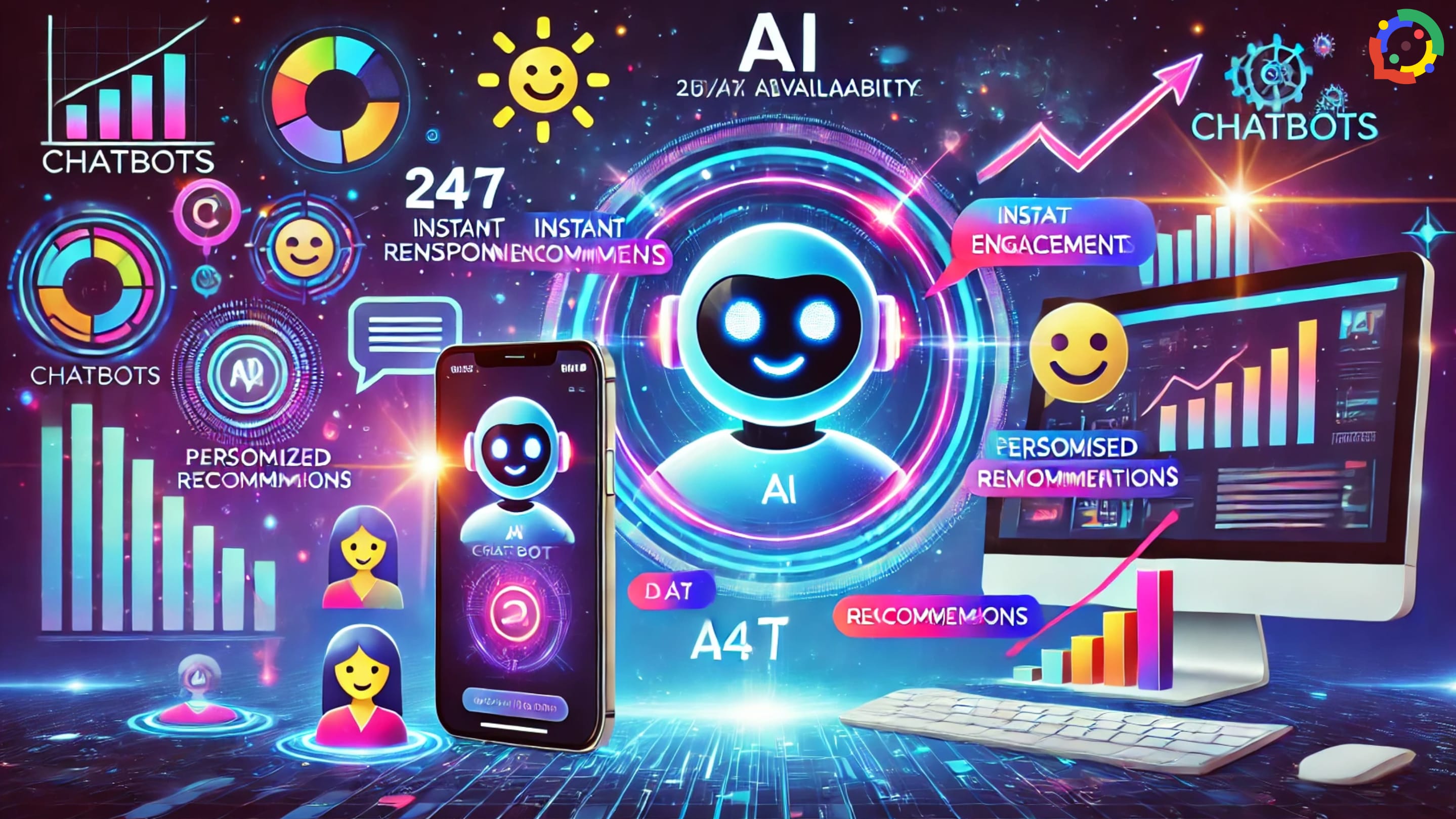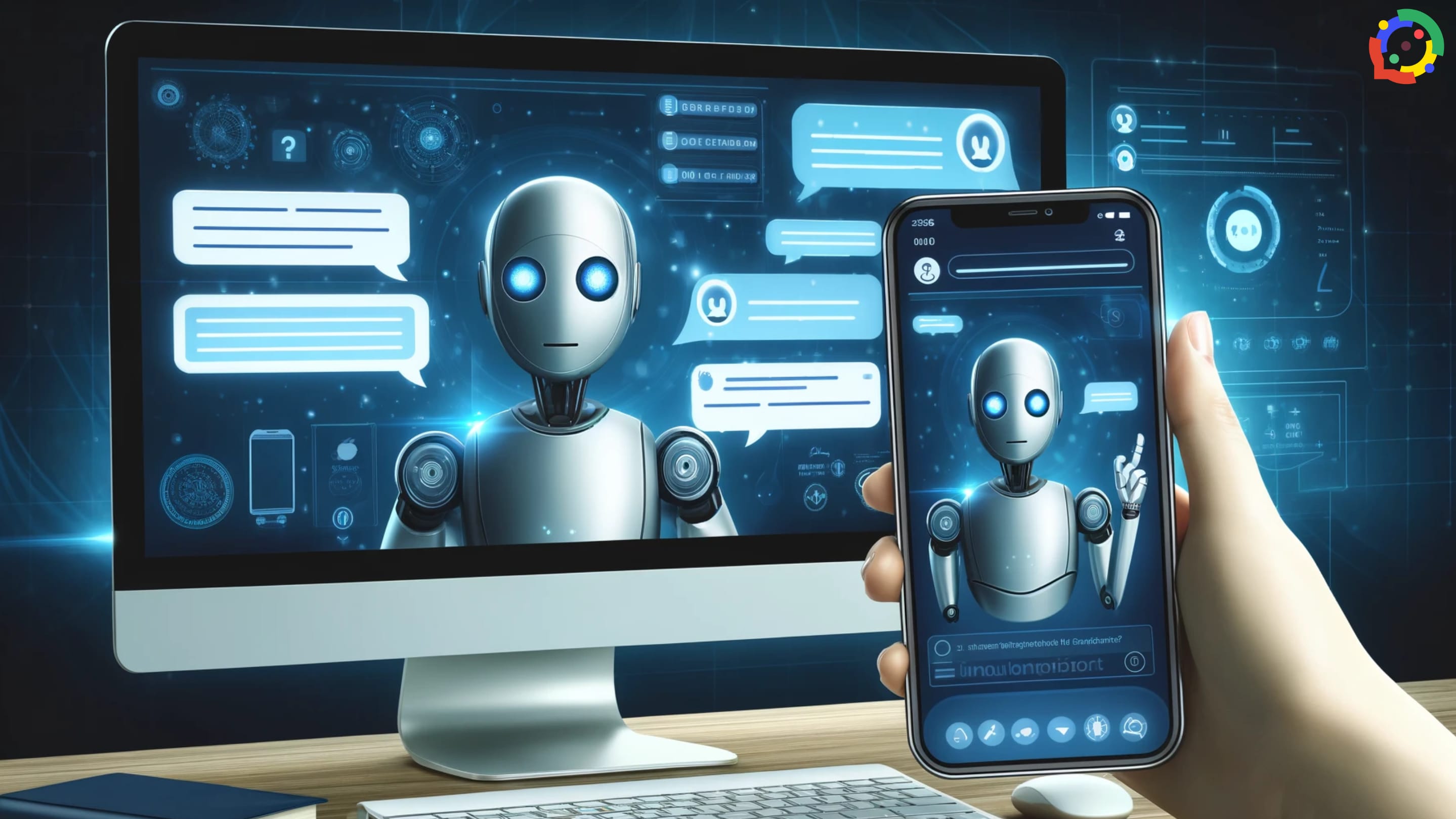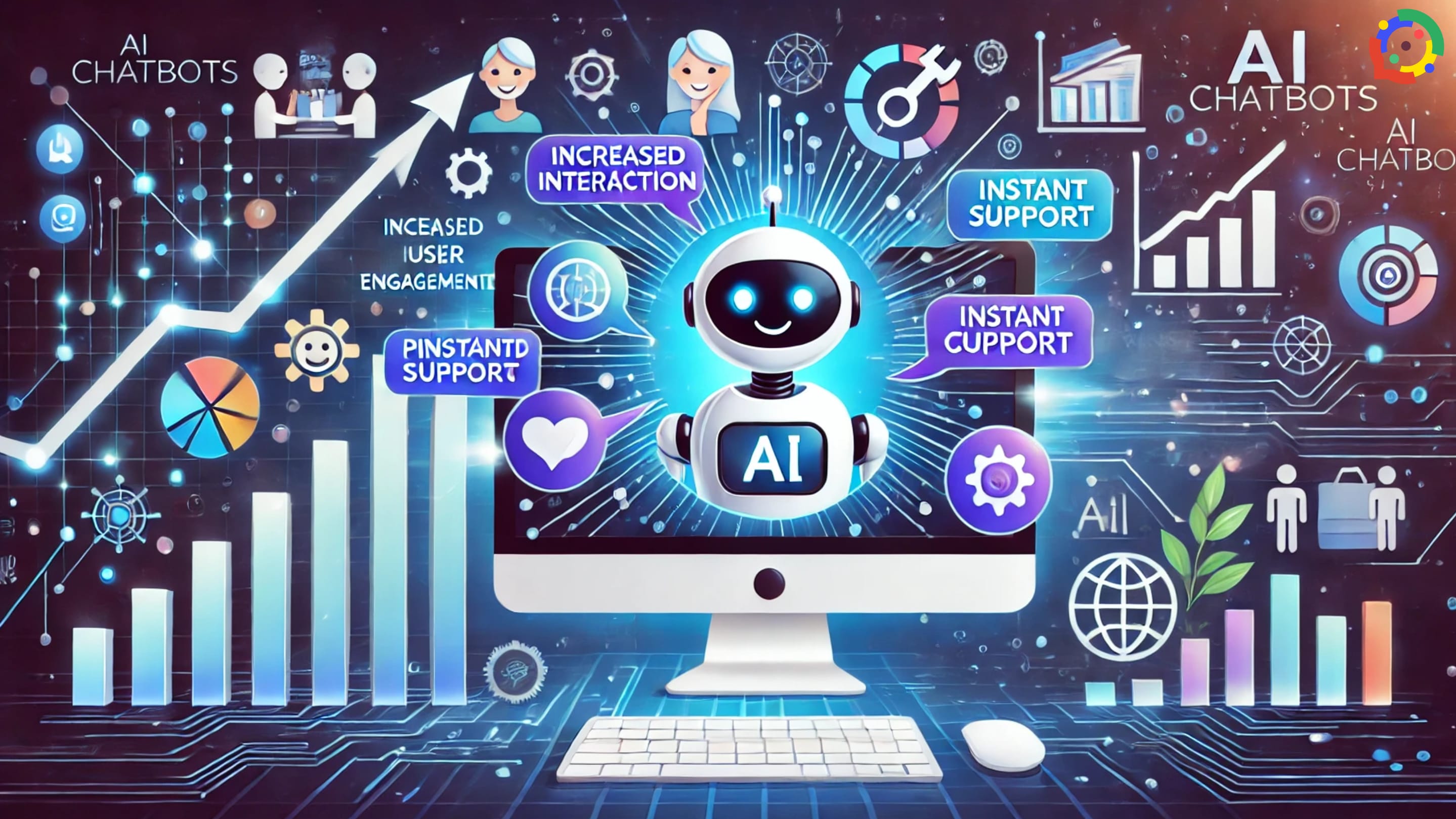Shake up the Digital Space: Boosting Website Interaction with AI-Powered Chatbots
10% to 20% of a company's revenue is allocated to marketing; startups and smaller companies typically spend an even larger percentage. Maintaining user engagement should be obvious when you spend this much money on website visitors.
Yet for the majority of online firms, website conversion rates are less than 2%. What do we not see? For some useful background information on website bounce rates, read this article: "Website Bounce and Conversion Rates: Why People Are Leaving Your Website"
We'll talk about using chatbots powered by artificial intelligence to increase visitor engagement in this article.

Article Summary
- The Significance of Website Interaction
- Conversion Analysis for Chatbots
- AI Chatbots' Significance for Website Engagement
- How AI Chatbots Can Increase Traffic to Websites
- The Best Ways to Use AI Chatbots
The Significance of Website Interaction
The degree to which users are actively involved with a website's content is referred to as website engagement. This can involve performing tasks like watching movies, completing forms, interacting with bots, and clicking links. A high rate of engagement is a sign that users find the information interesting and relevant.
High Engagement Rates Are Essential to the Success of Your Business
Engagement is essential for any website hoping to succeed commercially. It's important to maintain visitors' interest as much as to draw them in. Visitors that are actively involved with your site have a higher likelihood of becoming customers, referring others to it, and coming back later. Greater sales, more successful marketing campaigns, and more devoted customers can all result from high engagement rates.
Key measurements of engagement examples include: Here are some important measures to gauge how successfully a website captures and maintains the attention of its visitors:
- Bounce Rate: The percentage of visitors who depart after only reading one page is known as the "bounce rate." When your bounce rate is reduced, more visitors are staying on your website and visiting pages other than the landing page.
- Time on Site: How long people stay on your website on average? More time invested may translate into more interesting content or productive user engagement.
- Pages per Session: The average number of pages a visitor views in a single session is called pages per session. Increased numbers imply that users are more engaged and examining more of your website's content.
Conversion Analysis for Chatbots
Jeff Beckman provided some interesting predictions about the direction and status of chatbot technology in his tech report, “120+ Chatbot Statistics for 2024 (Already Mainstream)”.

We may find ourselves conversing with bots more frequently than with our lovers, according to an intriguing prediction. Within the next year and a half, more than half of service organisations intend to use chatbots—a notable 136% growth. Over half of companies think chatbots are revolutionising their sector.
Response rates for businesses offering top-notch chatbot experiences can reach 90%. Chatbots typically have a response rate of between 35 and 40 percent on average. Online businesses have experienced a 7% to 25% increase in income when they use Facebook Messenger chatbots to handle abandoned carts.
The potential for revenue of an online platform can be significantly increased using chatbot technology; depending on the sort of business, these increases can range from 10% to 100%. Response rates for outstanding chatbot conversations range from 80% to 90%. When making purchases, a lot of consumers place a higher faith in virtual assistants than in salespeople, and company executives claim that chatbots have increased sales by an average of 67%. When compared to the implementation costs, chatbots prove to be more profitable for over half of enterprises.
Another noteworthy feature of chatbots is their quickness, as 68% of users say they prefer them for it. Their capacity to link users to human agents when needed and their round-the-clock availability make them highly regarded. This 24/7 assistance is thought to be the main advantage of chatbots. Furthermore, chatbots have reduced customer support expenses for firms by up to 30%.
Still, there are issues as well. People are concerned that chatbots may not fully comprehend them or be able to handle difficult situations. Approximately 50% of customers believe that chatbots can occasionally keep them from contacting a human person when they need help. However, most people have a positive opinion of chatbots and understand how they may improve customer service and spur corporate expansion.
AI Chatbots' Significance for Website Engagement

Artificial intelligence (AI) chatbots are automated messaging programmes that mimic human communication. They are able to understand user input, apply natural language processing to analyse it, and then intelligently react. With the use of this technology, chatbots can efficiently respond to a wide range of requests, learn from interactions, and modify their responses.
The Advantages of Chatbot Engagement on Websites
- 24/7 Availability: Because chatbots are always on, your website may engage with users day or night without the need for pauses or downtime.
- Instant Responses: Chatbots reduce wait times and increase customer satisfaction by responding to consumer inquiries right away.
- Customised User Experiences: AI chatbots can improve user experiences by tailoring discussions and recommendations based on their memory of past user interactions and preferences.
Additional Benefits:
- Scalability: Chatbots are quite effective, especially during periods of high traffic, as they can manage thousands of chats at once.
- Cost-Effective: Chatbots save operating costs by relieving human personnel of repetitive chores and interactions.
- Data Collection and Analysis: Businesses can enhance their services and more precisely target their marketing by using chatbots to collect data from conversations. This data can then be analysed to get insights into user behaviour and preferences.
- Lead Generation: Chatbots can effectively increase conversion rates by directing visitors to sales or sign-up sites, identifying potential leads through conversations, and engaging them with interactive content.
- Decreased Bounce Rates: Chatbots can drastically lower a website's bounce rate by grabbing users' attention right away and keeping them there.
How AI Chatbots Can Increase Traffic to Websites
AI chatbots are revolutionising online customer service for enterprises. These chatbots have the power to dramatically increase website engagement by providing real-time help, tailored interactions, and interesting content. Let's examine the effective ways that some well-known businesses are utilising AI chatbots to enhance client relationships and produce astounding outcomes.

- Sephora
- Customer satisfaction increased by 44% as a result of a 44% increase in chatbot interaction. Operational Efficiency: The chatbot reduced the burden for human agents by 35% by handling 72% of regular customer inquiries on its own. Sales Conversion: Sessions using the chatbot resulted in a 25% increase in sales conversions. Conversion Rate: Compared to other channels, Sephora's conversion rate is 11% greater because to the use of AI solutions.
- H&M
- 86% of participants engaged, with an average interaction lasting four minutes. 8 percent click-through rate, which is 6% greater than email marketing's rate. Revenue: A 70% increase in revenue and a 200% increase in engagement.
- Luxury Escapes
- 4070+ deals have been viewed, and in the three months since the bot's introduction, 6200+ users have interacted with it. Revenue: $300,000 was made in the first ninety days. Conversion Rate: 52.63% is the conversion rate. 89% of respondents to retargeting messages replied to the messages. Three times larger than the website's discussion rate, or 12%, is the conversation rate.
- Estée Lauder
- Engagement: Using a series of questions, the chatbot guides customers in finding the perfect Double Wear Foundation shade by taking into account variables like skin tone and formula preferences. Conversion Rate: By allowing users to read product reviews and watch a tutorial video embedded within the chat, the chatbot streamlines the purchasing process and helps customers make informed decisions.
- L'Oréal Paris
- Engagement: The chatbot engages users in conversation to learn about their requirements and concerns related to beauty, and then customises its recommendations to suit each user's unique preferences. Conversion Rate: By offering data-driven and customised recommendations, the combination of technology and evidence-based decision-making not only expedites the scent choosing process but also improves customer happiness in general.
- CoverGirl
- Participation: The chatbot strikes up discussions with users regarding their beauty tastes and styles, producing impressive outcomes with a 14-fold increase in conversation rate over the typical post and a 91% positive attitude. Conversion Rate: Influencer-driven chatbot marketing effectively drives both conversation and conversion, as seen by the 48% of conversations that lead to voucher shipments and the 51% of clicks through on the vouchers.
The Best Ways to Use AI Chatbots

Advice for Creating Engaging Chatbot Conversations
- Establish Specific Goals: Specify what you want the chatbot to accomplish, such as responding to frequently asked questions, helping customers make purchases, or offering customer service.
- Employ Natural and Simple Language: Make sure the chatbot speaks in a way that is simple for people to comprehend. Steer clear of technical jargon and write brief, direct phrases.
- Give Users Clear Instructions: Use prompts and options that are obvious to help users navigate the conversation. This lets users know what to expect and how to communicate with the chatbot.
- Predict User Needs: Build the chatbot to foresee frequently asked inquiries from users and promptly deliver pertinent answers. Utilise information from past exchanges to guide this procedure.
- Provide Error Handling: Make sure the chatbot can respond to misinterpretations or unexpected inputs politely by providing useful advice or, if needed, rerouting users to human agents.
Making Sure the Chatbot Reflects Your Brand Voice
Keep It Consistent: The tone and aesthetic of the chatbot should match those of the other brand messaging. The chatbot's language should reflect your brand, whether it is formal, informal, warm, or professional. Include Branding Components: To provide a smooth user experience, incorporate your brand's distinctive words, greetings, and personality features into the chatbot's responses. Hold Fast to Your Principles: Make sure the chatbot responds and behaves in a way that reflects the qualities of your brand, which include being reliable, courteous, and helpful.
Consistently Improving and Customising the Chatbot Using User Input
Gather Input: Invite people to share their thoughts about their interactions with the chatbot. Surveys and follow-up emails can be used for this. Analyse Interactions: Keep a close eye on chatbot talks to spot recurring problems, user annoyances, and opportunities for development. Make essential improvements to the chatbot by utilising the feedback and interaction analysis insights to implement changes. This can entail improving the responses, introducing new features, or changing the direction of the discourse. Test Reports: Updates should be tested to make sure they enhance user experience without creating new problems before releasing them.
Keeping an eye on chatbot performance and making the necessary modifications
- Track Key Metrics: To evaluate the effectiveness of the chatbot, keep an eye on key metrics including response time, user happiness, engagement rates, and conversion rates.
- Establish Goals and Benchmarks: Establish performance metrics standards and improvement objectives. This aids in gauging development and determining accomplishment.
- Determine Trends: Examine the data for trends that point to ongoing issues or areas that could be improved.
- It is recommended to approach the chatbot as a dynamic tool that necessitates ongoing refinement. To develop continuous improvements, examine customer input and performance statistics on a regular basis.
Concluding Remarks on the Future of AI Chatbots in Website Engagement
With regard to website engagement, AI chatbots appear to have a bright future. Chatbots will becoming progressively more advanced and capable of managing difficult jobs as technology develops. Their capacity for ongoing learning and adaptation will only increase their efficacy, making them a crucial part of any internet strategy that succeeds.
This is the ideal moment to think about integrating an AI chatbot into your website if you haven't already. With KaraboAI, you may obtain one in less than ten minutes. See who they are by looking at their Demo Chatbots. Chatbots provide a competitive edge in today's digital landscape by greatly improving user interaction and happiness. Chatbots can assist in retaining visitors and converting them into devoted customers by offering prompt assistance and customised experiences.









